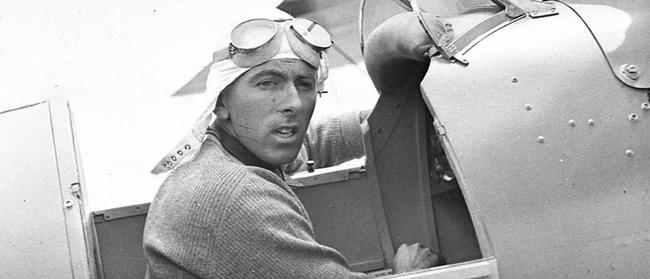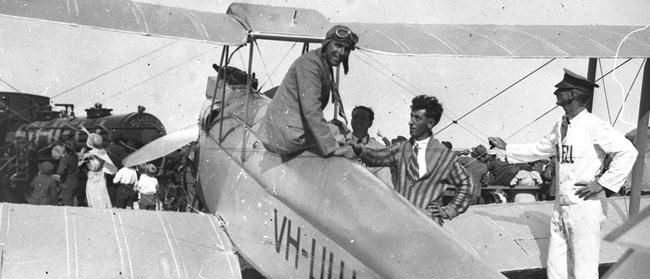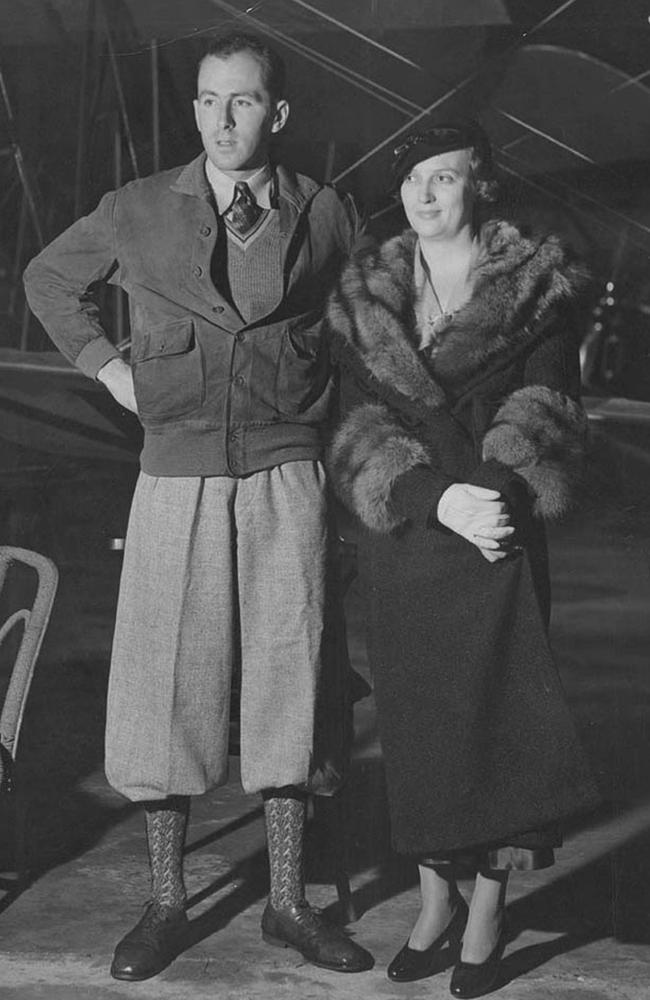English-born Australian aviator Jim Broadbent set records that still stand but vanished in a seaplane crash in 1958
When an Aero Topografica plane taking off from a Lisbon seaplane base crashed on its way to Madeira it was the sad end to the eventful life of Jim Broadbent, one of Australia’s great lesser-known pioneer aviators.
The scheduled takeoff of the Aero Topografica seaplane from Lisbon’s Aeroporto Maritimo de Cabo Ruivo at 7am was cancelled because of poor weather. Bound for Funchal on Madeira, the crew and passengers waited patiently for the flight to be rescheduled. By the time the weather improved it was nearly noon.
The plane, with a crew of six and carrying 30 passengers, finally took off at 12.23pm, 60 years ago today on November 9, 1958. But at 1.21pm the pilot, Jim Broadbent, radioed “QUG emergency” meaning “I am forced to land immediately.” Nothing more was heard from the pilot.
Despite reports of wreckage being found by searchers near where the plane is thought to have gone down, no trace of the plane, its crew or passengers was ever found. This was a tragic end to the record-breaking career of Jim Broadbent, one of Australia’s great, but lesser known, pioneer aviators.

He was born Harry Frank Gibbs (or Harwood), the son of music hall performer Joseph Gibbs, who also went by the name Frank Harwood, on March 25, 1910, in Chiswick, England. His mother Madge was daughter of English theatre great Harry Rickards, who had made his home in Australia in the 1880s, where Madge was born. She divorced Joseph and in 1922 migrated to Australia with her son, using money left by her father after his death in 1911.
In 1923 Madge married John Allen Broadbent, owner of Windella Station, near Narrandera. Young Harry Frank adopted his stepfather’s surname and thereafter preferred to be known as Jim Broadbent.
Broadbent’s mother died in 1928, but he found some solace in the stories of pioneer Australian aviators such as Charles Kingsford Smith, who were pushing the boundaries of aircraft at the time. Joining an aero club, he took flying lesson and gained his pilot’s licence in 1929.
He invested in his own aircraft, a Blackburn Bluebird, and began taking locals on joy flights and entering air races. In September 1930 he won the Aero Club’s Derby Handicap and December the Mascot Cup. In 1931 Broadbent travelled to England, his mind set on breaking Kingsford Smith’s record for flying from England to Australia, but he was forced to abandon the attempt after landing in a swamp in Turkey and coming down twice between there and Syria.

He returned to Australia and bought a new plane, an Avro Avian. In August he flew from Brisbane to Sydney, then on to Melbourne and Adelaide, the first person to do this trip in one day. He continued from there flying around Australia, setting a new record of seven days, eight hours and 25 minutes. In between races and record attempts he met and married Beryl Bower in December 1931.
Purchasing a Puss Moth in 1932 he tried to start up an air taxi service, but when all Puss Moths were grounded after an accident, he dabbled in his second love, training race horses. When he was allowed back in the air in 1933 he started up his taxi service again and flew in races.
Buying a new Puss Moth in 1935 he flew anticlockwise around Australia to smash his own record, doing the trip in three days, nine hours and 54 minutes. His record still stands. He then went on to break Smithy’s record doing the trip from Australia to Britain in six days, 21 hours and 19 minutes. But his record was soon beaten by New Zealand flyer Jean Batten. In 1936 Broadbent got a new Leopard Moth he named Windella, after his stepfather’s property, and took back the record. A few months later Batten broke it record again.

Broadbent had two failed attempts to set a new record before he finally succeeded in a Vega Gull in 1938, setting a time of five days, four hours and 21 minutes. His favourite way of combating boredom in the air was to read detective fiction, at times telling people he couldn’t wait to get back in the air to find out “who dunnit”.
Broadbent was piloting flying boats for Qantas Empire Airways when war broke out in 1939. He joined the RAF Ferry Command, which involved flying planes from Canada to bases around the world. It was dangerous work but he survived to continue working as a pilot after the war, but also tried his hand at other things, taking a lease on a hotel in Gundagai and later training horses.
In 1947 he divorced Beryl and in 1950, aged 40, married the 24-year-old Meris Rudder. The couple moved to England in 1952 where Broadbent found work as a commercial pilot with various airlines. He was working for Aero Topografica, also known as Artop, in 1958 when his plane vanished without a trace.



